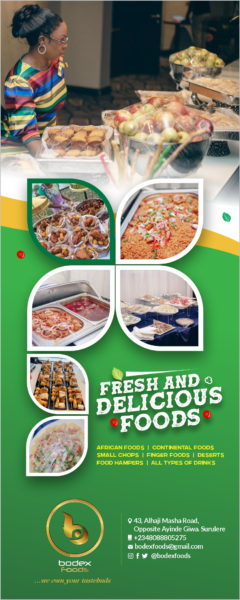Food
Traders List Reasons Why Prices Of Rice, Onions, Cooking Gas Rise Every Week
The price of local rice, onions, cooking gas, pepper, and other staple food items has significantly increased across major markets in Lagos State. The bi-monthly market survey is carried out by Nairalytics.
The survey considered four major markets in Lagos state namely; Oyingbo, Daleko, Mushin, and Mile 12 Market.
Specifically, the price of a big bag of dry onions rose significantly by 57.4% to sell for an average of N28,175, despite falling to N17,900 earlier in the month. Likewise, the price of a small basket of sweet potatoes climbed by 54.55% to sell for an average of N6,375 compared to an initial average of N4,125.
The report also showed that a big bag of pepper that was initially sold for an average of N22,750 two weeks ago has increased to an average of N27,950, while the cost of refilling a 12.5kg cylinder of cooking gas has topped N11,250. It is worth noting that as of this time last year, a 12.5kg cylinder of gas was refilled for an average of N4,600, representing a 145% year-on-year price increase.
On the flip side, the price of a 2kg bag of wheat meal dropped by 38.11% to sell for an average of N1,145 compared to N1,850 recorded two weeks ago. Additionally, a 500g packet of power pasta now sells for an average of N400 from an initial average price of N500, thereby representing a 20% decline in price.
Meanwhile, the incessant increase in the prices of food items was attributed to the high cost of transportation as a result of the surge in the price of fuel, scarcity of fuel in some areas, and bad road networks. In other cases, the increase was attributed to seasonal fluctuations, a high rate of insecurity, and an erratic power supply among others.
The crippling effect of the surging food prices has eroded the purchasing capacity of Nigerians as traders now lament low sales turnout and rationing by consumers.
This is in line with the World Bank’s Nigeria Development Update (NDU) report, where the apex financial institution stated that inflation will likely push an additional one million Nigerians into poverty by the end of 2022.
This is in addition to the over 80 million Nigerians that are estimated to live below the poverty line, while other socio-economic factors continue to ravage the country.
Food is a very important necessity in the Nigerian economy as most Nigerians spend a huge chunk of their household expenditure on food items. According to the National Bureau of Statistics (NBS), Nigerians spend over 56% of their household expenses on food.
The National Bureau of Statistics (NBS) on Wednesday, 15th June 2022 released the nation’s consumer price index, which showed that Nigeria’s inflation rate rose to its highest level in 11 months, rising from 16.82% recorded in April 2022 to 17.71%.
The food index, which is a closely watched component also rose by 19.5% year-on-year in May 2022, representing a 1.13% points uptick compared to 18.37% recorded in the previous month and a 2.78% decline compared to the corresponding period of 2021 (22.28%).
According to the Bureau, the rise in the food index was caused by increases in prices of bread and cereals, food products, potatoes, yam, and other tubers, wine, fish, meat, and oils.
A look at the NBS report on cooking gas price watch for the month of May 2022 released during the week, showed that the average price for refilling a 5kg Cylinder of Liquefied Petroleum Gas (Cooking Gas) stood at N3,921 in May 2022 from N3,800 recorded in April 2022 indicating an increase of 3.18% month-on-month.
Also, the average price for refilling a 12.5kg cylinder of cooking gas increased to N8,726 in May 2022 from N8,164 recorded in April 2022 representing a 6.88% month-on-month increase.
Although field survey shows that the price has surpassed N11,000 in Lagos State as of press time.
The highlight of the report is given below. It contains information on items that witnessed price increases, and price decreases, as well as market insights from interviews conducted.
Items that recorded increases
A small basket of Irish potatoes currently sells for an average of N5,500, rising by 47.65% from an initial average of N3,725 recorded two weeks ago.
The price of a big bag of pepper witnessed a 22.86% increase to sell for an average of N27,950 compared to a previous average of N22,750.
In addition, a 0.9kg of Ayoola Poundo Yam flour now sells for an average price of N1,475, indicating an increase of 13.46% when compared to the average of N1,300 that was recorded two weeks ago.
Also, a big tuber of Abuja yam rose by 11.48% to sell for an average of N1,700. It was initially sold for an average of N1,525.
Similarly, a 50kg bag of big bull rice increased by 9.2% to sell for an average of N34,125 against N31,250 recorded earlier in the month, while 25 litres of local palm oil recorded a 9.12% increase to sell for an average of N23,475.
Other items that recorded price increases within the two weeks under review include a carton of full chicken, teabag, a bag of yellow and white Garri, a bag of Honeywell premium flour, a bag of brown beans, etc.
Items that dropped in prices
Some food items, however, recorded a price decrease in the period under review.
The price of a 5kg pack of Honeywell wheat meal dropped to N2,645 as against N3,625, indicating a 27.03% decline in price.
A small basket of round-shaped tomatoes recorded a price decrease of 17.94% to sell for an average of N13,375 compared to the initial average of N16,300.
Furthermore, a 25g pack of Nescafe classic coffee now sells for an average of N625 indicating a decrease of 12.13%.
The price of 800g Milo refill cocoa beverage declined by 15.36% to sell for an average of N2,053 while the 450g of Milo refill cocoa beverage dropped by 11.40% to sell for an average of N1,185 from the average of N1,338 recorded two weeks ago.
Market insights
In a brief chat with Ada John, a potato supplier at Oyingbo Market, she stated that her major challenge is the supply chain. She explained that whenever she is done with her account analysis, she mostly realizes a loss due to surging operating costs.
“Moving goods from the North region to Southern part of Nigeria has become very difficult for most transporters, mainly because of bad roads especially now that it’s the rainy season, So, whenever the cost of transport goes up, we have no choice but to increase the prices so as not to run into a loss,” she added.
Cynthia, a frozen food dealer at Daleko Market, stated that the cost of frozen foods especially chicken and turkey has been on the rise due to the increase in the cost of their feed, thereby making rearing of this livestock less lucrative.
“Lack of power supply and increased price of fuel to power our generator is also a major challenge that we face as a frozen food dealer, apart from the price increase from the farm, our own operating costs also reflects in the final selling price,” she explained.
While speaking with Adamu, an onion seller at Mushin Market, he complained that poor harvest and the rainy season caused the increase in the price of dry onion. This is in addition to the level of insecurity in the northern regions as explained by Mr. Adamu.
“We are often chased by bandits from the farm and even the few onions we harvested are always collected from us and we only have the leftover to ourselves”, he said.
In a conversation with Mallam Hamza, a pepper trader at Oyingbo market, he mentioned that continuous rainfall causes damage to pepper vines, thereby affecting the cultivation of pepper, which has contributed to the recent increase in the price of pepper.
“We know that the price of pepper and tomatoes usually changes as a result of seasonal fluctuations, therefore, we can’t hold on to any reason for the recent spike in the price of pepper, but I can tell you that the size of pepper available in the market is very small, the volume is also limited, hence causing an uptick in price,” Mallam Hamza explained.
According to Dupe, while making purchases at Mile-12 Market, he frowned at the irregular spike in the price of food in the country.
He said, “we do not know where we are heading to, in 2020, we thought it was the worst due to the covid-19 pandemic, with the expectation that after the pandemic and lockdown, things will go back to normal. Unfortunately, things have hit rock bottom.”
“It appears that the price of food items as well as other commodities and services have nowhere else to go except upward, while our income is not growing. It is painful, disheartening, frustrating, and we are just powerless.”
“We are only just considering food inflation now, what about other areas of insecurity, bad transportation, daylight robbery amongst others. Going out is no longer safe in any part of the country or at any time.”
“How are we supposed to function and grow our earnings, if we are constantly looking over our shoulders for fear of attack or robbery?” he asked.























